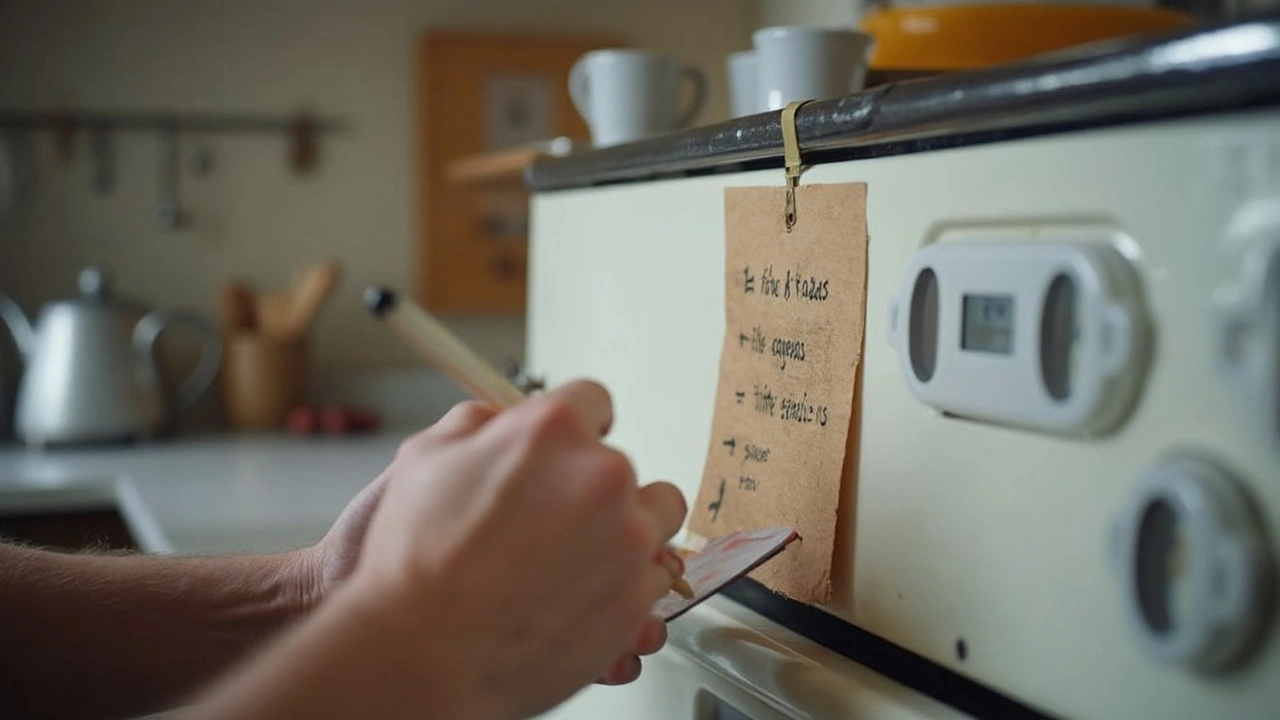Your oven suddenly won’t heat up, or maybe it’s only half-baking your pizza. Feels like the dinner rescue mission just hit a rock. If this sounds familiar, there’s a good chance your oven’s heating element may be to blame.
It’s actually pretty easy to spot a blown oven element once you know what to look for. Don’t stress about calling a technician right away. With a few simple checks, you can figure out if the element is toast or if something else is going on. The sooner you figure it out, the less you’ll risk ruining more meals—trust me, I’ve had to bail out with pizza more than once because of a dead element.
So, before you start Googling new ovens, let’s get clear signs and quick tests on your side. These aren’t just random guesses—this is how the pros troubleshoot your oven when you call them in. Knowing these basics will save you time, money, and probably a few headaches.
- Top Warning Signs Your Oven Element Is Blown
- Why Oven Elements Fail in the First Place
- DIY: How to Check If Your Element Is Really Dead
- When to Repair vs Replace (and How to Stay Safe)
Top Warning Signs Your Oven Element Is Blown
A blown oven element usually doesn’t hide its problems for long. If you’re seeing any of these classic signals, something’s definitely up with your oven’s heating game.
- No Heat at All: You set the temperature, but the oven just won’t get warm or only the light comes on. Classic sign right there.
- Uneven Cooking: If your casseroles are cold on one side and sizzling on the other, it’s a big clue the element isn’t heating up evenly or at all.
- Visible Damage: Sometimes you can spot the problem just by looking. Blown elements often show up with dark spots, blisters, or even cracks along the coil.
- Sparks or Smoke: Some people notice sparks or a small pop when the oven is starting up—don’t ignore this. If you see smoke or smell something burning, turn the oven off right away. A burnt-out element can sometimes give off a strong metallic smell, too.
- Element Won’t Glow Red: In most electric ovens, the element should glow red-orange when running. If it stays dull or only heats in patches, something’s not right.
Seeing one of these signs is usually enough to point the finger at the heating element. If you notice two or more, you can be even more confident you’ve found your culprit.
Here’s a quick summary of the tell-tale symptoms, so you can tick them off at home:
| Sign | What You’ll Notice |
|---|---|
| No Heat | Oven stays cold; food doesn't cook |
| Uneven Cooking | One side raw, other side burnt |
| Visible Damage | Cracks, burn marks, blisters |
| Sparks/Smoke | Pop noise, smoke, or bad smell |
| Element Not Glowing | Stays black, or only lights in sections |
It’s wild how many people miss these obvious signs. Oven element blown is one of the top reasons electric ovens quit on you. Catching the symptoms early means you’re already halfway to fixing the problem—and you’ll dodge wasting money on unnecessary repairs or new appliances.
Why Oven Elements Fail in the First Place
Oven elements wear out. That’s just what happens with daily use, but the reasons why they fail aren’t always so obvious. The most common issue is just old age—most oven elements last 5 to 8 years when you use them regularly. The more you bake, the sooner you’ll notice trouble.
Here’s where things start to go wrong for heating elements:
- Constant heating and cooling cycles make the metal expand and contract, which weakens it over time and eventually causes cracks or breaks. That’s usually when you see visible burn spots or even a split in the element.
- Spills and splatters from food can actually cause hot spots. Sometimes you forget to put a tray under those cheesy casseroles. Food gunk burns onto the element and can make it fail faster in that spot.
- Power surges aren’t friendly to any electronics in your kitchen. If you’ve ever lost appliances after a lightning storm, you know what I mean. They can fry your oven element instantly.
- Faulty wiring or loose connections can cause the element to overheat where it’s not supposed to. That shortens its life quickly.
It’s not always something you did. Factory defects or poor materials do happen, but it’s rare compared to regular wear.
If you’re curious how common oven element failure is, check out these numbers from a 2023 home appliance service survey:
| Reason for Failure | Percentage of Cases |
|---|---|
| Wear and Tear | 62% |
| Food Spills/Burns | 19% |
| Power Surges | 11% |
| Manufacturing Defect | 8% |
A quick tip: If you want your oven element to last, keep it clean (especially after spills), and don’t slam the oven door. It’s doing more work than you realize every time you cook dinner.

DIY: How to Check If Your Element Is Really Dead
You don’t have to be an electrician to figure out if your oven’s heating element has checked out. You can do some basic checks with your eyes, hands, and, if you want to go the extra mile, a cheap multimeter. Here’s how I usually tackle it—whether I’m working on my own oven or helping out a neighbor.
Oven element blown symptoms are actually not hard to see if you know where to look. The heating element is that metal coil (usually at the bottom for bake, at the top for broil) inside your oven. If your oven isn’t getting hot, or if only part of the element glows, that’s a strong clue. Sometimes the oven tries to work but just can’t hit the right temp, which totally messes up baking anything.
- Visual check: Turn off and unplug your oven before doing anything. Once it’s safely cool, take a look at the element. Any blistered, cracked, or burned spots? Is it warped, broken, or showing white/grey patches? A healthy element is usually dark and even. Damage means it’s shot.
- Touch test: Gently (and carefully!) press along the element. If pieces flake off or it feels brittle, replacement is needed.
- Heating test: Plug the oven back in, turn it on, and watch. If your element stays cold while the oven’s “on” light is glowing, or only part of it heats up, that’s a dead element.
If you want a more technical check and don’t mind spending about $10 on a multimeter, you can test for electrical continuity. Here’s how:
- Unplug the oven again and remove the screws holding the element in.
- Detach the element gently from its connectors.
- Set your multimeter to resistance (ohms).
- Touch the probes to either end of the element (where the wires connect).
- If the reading is between 10-50 ohms, the element is probably fine. If it jumps to zero or infinity, it’s dead.
Here’s a handy table with quick stats and what they mean:
| Test/Sign | What You See | Diagnosis |
|---|---|---|
| Visual Inspection | Cracks, blisters, breaks | Blown/Dead |
| Heating Test | No glow or partial glow | Blown/Dead |
| Multimeter Test | 0 or Infinity (ohms) | Dead |
| Multimeter Test | 10–50 ohms | Good |
One more tip: Always unplug the oven before poking around. Seriously, no burned fingers or surprise zaps needed! If everything points to a dead element, you can usually order a replacement online for $20–$60. Swapping it out is basically unscrewing the old one and screwing the new one in—way cheaper than calling for repairs.
When to Repair vs Replace (and How to Stay Safe)
You’ve found the signs, you’re pretty sure your oven element blown is the problem, now the real question: should you repair it or shell out for a new element—or even a whole new oven?
If you spot clear damage—burn marks, holes, or the element doesn’t glow at all when you turn the oven on—it’s usually a simple case of replacement. Heating elements wear out; most only last about 5 to 7 years, depending on how much you use your oven. Still, this is one of the most affordable things to fix in a kitchen appliance. Most brands’ replacement elements run between $25 and $60, and you can usually swap them out in under an hour if you’re comfortable using a screwdriver.
Repair usually isn’t worth it for a single element. If the wiring or terminals are damaged, or you smell burning even with a new element, then it’s time to call a pro. Sometimes, these issues can signal a deeper electrical problem, which isn’t a DIY job for most folks.
People often ask, 'Should I just get a new oven?' Not unless your oven is ancient or has multiple things going wrong. Here’s a quick way to tell:
| Situation | Recommended Action | Approximate Cost (USD) |
|---|---|---|
| Element won’t heat, visual damage | Replace Element | $25-$60 DIY, $120-$200 with labor |
| Oven trips breaker or burns wire ends | Call a Pro | $120-$350+ |
| Multiple functions failing, oven over 12 years old | Consider Replacing Oven | $400-$1200+ |
Now, about safety. Turning off the oven at the wall is non-negotiable. Even when unplugged, some wires inside can still give you a shock, so don’t poke around unless you know what you’re doing. Wear work gloves—those elements are sharp and can slice your skin.
If you replace the element yourself, double-check the part number matches your model (it’s usually on a sticker when you open the oven door). If in doubt, take a photo of the current setup before unplugging wires from the old element. It’s easy to forget which wire goes where after a coffee break.
And one last tip: if you smell burning or notice sparking after the change, kill the power and call a tech. It’s not worth risking a kitchen fire. Better safe than sorry—Charlie and Luna will thank you for not accidentally lighting the house up.


